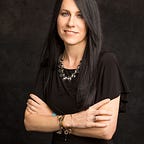Blended Learning and the Flipped Classroom
Guest post by Dr. Matthew Friedman, @mfriedmanPGH
School administration and educators continue to face a daunting task in the wake of the COVID-19 pandemic: how to educate students without a classroom. As many schools remain closed, educators rely on Google Classrooms, Zoom, and other online platforms to connect with students.
Although the pandemic has caused an incredible strain on our society, it has also opened doors for the growth of blended, online and outside the box educational practices. More than ever, people are relying on technology to learn. With the ongoing transformation of blended and online learning, we step further away from the traditional education model and towards a future where students are more active participants in their learning process.
While the online learning environment has some imperfections and no one is safe from things like Zoom fatigue, the rapid shift to blended and online learning environments has highlighted the resiliency of teachers and students and showed us how beneficial these strategies can be. While much of the future remains uncertain, it seems blended and online learning are finally here to stay.
What is Blended Learning?
Blended learning is an educational strategy that uses online and technology-based material to support traditional in-person learning. A 2010 study from The U.S. Department of Education found that blended learning strategies yielded better results than classes that solely used in-person strategies. What exactly qualifies as blended learning is still a topic of debate among scholars, but there are a few models that have been recognized for their positive impact on learning:
While the amount of time students will spend in the classroom this year remains uncertain, concepts such as flipped learning seems to offer the most effective model for students and teachers. Flipped learning centers the student as they take on a more active role in their learning process. Unlike the traditional teacher-centered classroom where students show up with a ‘blank slate’ to be filled by the teacher, flipped classrooms require students to study new information online before coming to class. Then, the teacher can give support as needed and dive deeper into the topics.
Many teachers have used the flipped classroom model, especially during the pandemic when students were only coming to school part time. It’s been a great strategy for teachers during the temporary shutdowns, but will this model simply be a tactic for getting through the pandemic — or will this be an instructional model for our future?
The flipped classroom has actually been in practice long before the pandemic changed life as we know it, and its success implies that it will be a popular model of education for years to come. So, what do people love about flipped learning? First, flipped learning is an opportunity for students to learn how to self-regulate. Flipped learning also teaches students that information is widely available via technology and the internet. Teachers also love the flipped classroom’s ability to provide multimodal content to students; content can be shared in the form of videos, readings, recorded lectures, discussion boards, and interactive labs.
For many students, the opportunity to introduce themselves to new information at their own pace is a welcome change from the in-person learning style where content is delivered to students at the same time, at the same pace. Teachers can also appreciate the ease at which personalized learning takes place in flipped classrooms.
But no instructional model is perfect, and we can’t ignore the imperfections of flipped classrooms. The biggest issue facing flipped learning is socioeconomic variation among students; not all students have access to the technology needed in order for flipped classrooms to work. Another obstacle are the differences in students’ personalities; those who struggle to self-regulate and work independently will quickly fall behind their peers.
The pandemic has challenged much of what we thought we knew about education. We now, more than ever, understand the importance of helping students learn to teach themselves new information and regulate their learning. We also know that in well-planned structures, learning happens outside of the classroom just as successfully as it does inside the classroom. Personalized learning has helped students find that success and technology has a lot to do with that success.
Yes — this pandemic has been one of the biggest challenges public education has faced. As educators and people passionate about education, we have to look for learning and growth opportunities in these challenging times. When it comes to education, not only have we learned how to get through the pandemic, we’re also discovering the benefits of non-traditional learning methods.
With a new school year upon us and a new variant of COVID-19 spreading through the country, consider the challenges that we have faced and the growth we have made as we continue to re-envision what education truly looks like moving forward.
Bio
Dr. Matthew Friedman serves as an Assistant Superintendent at South Orange Maplewood School District. He has over twenty-three years of experience in public education and has spent the last eighteen years in administrative/ leadership roles, including Assistant Principal, Chief Academic Officer, and Assistant Superintendent. Dr. Friedman has extensive experience in post-secondary education, teaching at both the undergraduate and graduate levels, acting as a Supervisor for the university statewide teacher certification program, and serving as a dissertation chair in the graduate school of education. Recognized as a visionary leader and educational innovator, he frequently provides educational consulting services on a national level. In his work, Dr. Friedman is passionate about creating learning environments that foster transformation, designing innovative learning experiences for all learners, curating personalized professional learning opportunities for teachers and administrators, and community building within schools/districts.
Originally published at http://rdene915.com on October 8, 2021.
